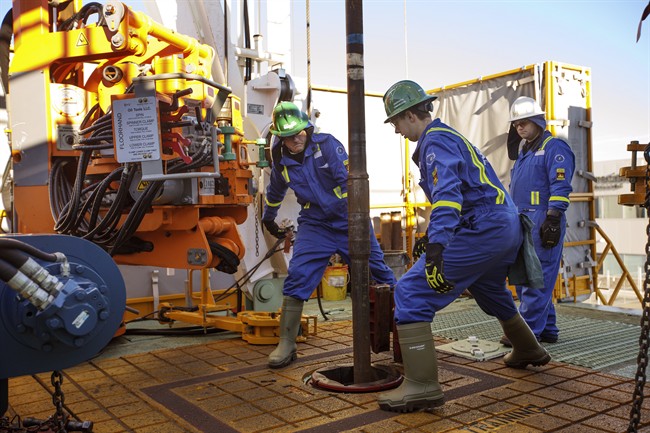Bundled up “like a snowman” on a wind-whipped Precision Drilling rig in wintry eastern Alberta, rookie hand Dan Brook says he couldn’t feel more removed from his childhood home on the south coast of England.

For the 32-year-old, whose family moved to Canada 20 years ago, his new profession offers hope of a better life after 15 years working at low-paying hotel and mechanic shop jobs in Alberta and New Brunswick.
“I would like to see it as a career,” he says. “As of right now, definitely, I’m just going to throw myself into it as if I plan on doing it for the rest of my life and go from there.”
Brook isn’t yet sure how much money he’s going to make or how his shifts are going play out, but he already knows keeping his job depends on oil prices set in New York and London.
Recent oil price stability over US$50 per barrel and optimism sparked by the announcement in November of production cuts by OPEC and non-OPEC producers have resulted in rising numbers of oilpatch workers registering for courses at Enform, the industry’s primary safety training organization.
“We’re seeing a 10 to 15 per cent pickup,” says Enform CEO Cameron MacGillivray.
“We don’t know if that will continue through the year but with rig utilization up over the same period last year, we’re optimistic.”
READ MORE: Oil prices hit 18-month high as OPEC output deal kicks in
It’s good news for the non-profit organization that trained just 125,000 workers last year, the lowest number since it was founded in 2005. It posted a record high of 240,000 in 2014.

Get weekly money news
The numbers are consistent with the overall health of the industry. The Canadian Association of Petroleum Producers calculates there have been more than 50,000 announced layoffs in the oilpatch since 2014 as companies reacted to benchmark crude prices that fell from above US$100 per barrel to as low as US$27 in January 2015.
Calgary-based Enform offers heavy equipment and drilling rig training at Nisku, just south of Edmonton, as well as classroom courses through offices in Weyburn, Sask., and in Fort St. John, B.C. But it can arrange courses throughout Canada and around the world taught by its 500 contract instructors.
READ MORE: Could Alberta’s oil industry be rebounding?
The non-profit organization’s courses include Bear Awareness, Vapour Plume Ignition Training, and Drilling Equipment and Well Completion. Some of its more than 80 programs are legally required prerequisites for work on an oil and gas wellsite and must be updated regularly.
Both Precision Drilling (TSX:PD) and Nabors Drilling Canada have training rigs in Nisku to supplement safety training by Enform.
Nabors has hired 280 field staff since July, with about 45 newcomers, as it moved from three working rigs to 25, reports vice-president George McHardy.
Precision, meanwhile, says it has hired about 1,200 people in Canada since last May as its active rig count climbed from 11 to over 90.
READ MORE: Alberta tech sector leads the way as economy rebounds: BDC study
As many as 150 are green recruits, says Ross Pickering, Precision’s senior vice-president of operations. He says each goes through a three-day orientation on the training rig before being sent out into the field, where they will be considered a trainee for about six months.
Some won’t stick around, he notes.
“The entry level probably has a 40 per cent drop-off rate,” Pickering says. “It’s the remoteness, it’s cold, it’s wet, it’s hard work, so it’s not for everybody.”
Watch below: While there is still a long way to go before we see Alberta’s oil industry rebound to where it was two years ago, there are some positive signs out there. Tom Vernon reports.

President Mark Salkeld of the Petroleum Services Association of Canada, a partner in Enform, says training is vital to ensure drilling crew members avoid injury and stick with the job.
“The strategy is, let’s teach them. If you give them a head’s up, it doesn’t scare the hell out of them and they stick around for more than a day.”
Safety was a big worry for Dan Brook despite advice from his girlfriend’s brother, who has been commuting from New Brunswick to work on a Precision rig in Western Canada for about six years.
He says orientation offered some reassurance but his confidence really grew when he reached the rig and was given the green hard hat that all rookies must wear.
“When you have that green hat on, they take care of you. You might as well be on somebody’s back, getting a piggyback around.”


Comments